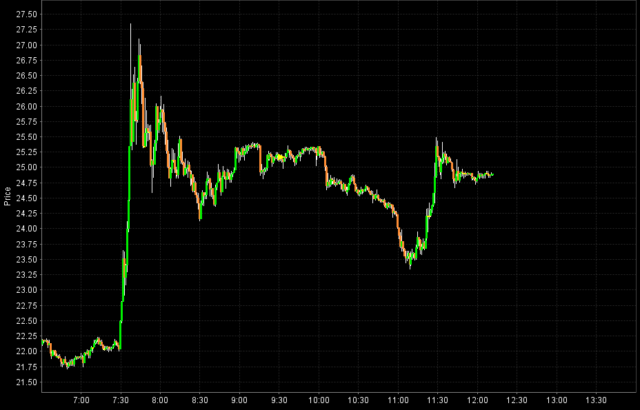The amount of incompetence exhibited by the current federal government is mind-blowing, but that’s what you get when political correctness is a dominant social consideration than taking proactive action. However, our incompetent government does have the legislative authority to blow over a hundred billion in borrowed money on their supporting constituencies, in addition to the levers of the Bank of Canada and others that tilt monetary policy and loan guarantees towards favoured sectors.
So let’s start with Bombardier, the poster child for government handouts. They will get a loan guarantee to ensure continuity of their operations as corporate business jets is an essential service (can’t catch Covid-19 when you’re in a private jet 35,000 feet above the skies).
Bombardier debt was selling at nearly 25% YTM, and unlike their common shares and preferred shares (where there is a good chance they will suspend dividends), they can’t suspend interest payments on their senior debt. They’ll find a way to kick the can ahead in time, even if their proposed sale of the Transportation division with Alstom fails. Alstom is still trading at 37 Euro per share and part of the BBD sale valued $550 million of Alstom stock at 47.50 Euro, so it’ll be interesting to see how this goes.
Needless to say, the Caa1 rating by Moody’s is well warranted and it is trading like a default is imminent.
Their floating rate preferred shares (BBD.PR.B) give out a yield that is the equivalent of prime, and at their current trading price, that equates to a 13% eligible dividend. So this is a rare situation where the lower risk asset, the debt, is yielding more than and is ultimately cheaper than the preferred shares. Go figure.
I’ll point out that the super-voting shares (BBD.A) are trading exceptionally higher than the small-vote (BBD.B) shares, which should be an indication that there is some sort of value in controlling the corporation. If everything was going to crap, I’d expect the A’s to trade much closer to the B’s.
I got some of Bombardier’s unsecured senior debt at nearly 25% YTM. Not a huge position, but enough of a position where when I start hearing about the inevitable bailout via loan guarantees, I can at least feel I didn’t get robbed, because the rest of the Canadian taxpayers certainly are. Keeping to my short duration policy (regarding inflation), it was the March 2022s that caught my attention. In my nominal scenario, Bombardier will put out a tender offer to repurchase these at some modest premium sometime in 2021.
I know this makes me a hypocrite since I generally suggest not having to do anything with aviation during this CoronaPanic. However, this is more of a political call than a financial one (although financially, Bombardier is not in catastrophic shape).
Since I’m talking about bonds, I’ll throw out another idea I’ve looked at but declined simply because it was beyond my horizon to evaluate but others out there might have some perspective. Taseko Mines (TSX: TKO) is financed mostly by a senior secured bond that matures on June 15, 2022. Taseko’s main producing operation is a copper mine (75% ownership) and the commodity is currently trading ever so slightly above their all-in cost to produce it (about US$2/pound while copper is hovering around US$2.20 post Covid-19). If you anticipate spot copper improving, TKO is well leveraged and they would be able to renew the debt which is secured by their operating mine. The last trade on the June 2022 debt (8.5% coupon) was 45 cents on the dollar, which needless to say is a 55% YTM. High risk, very high return. Even in the event of a CCAA or recapitalization process, I’d suspect you’d get some sort of recovery in line with the price. I don’t know much about copper, so I’m throwing this out here for you.
